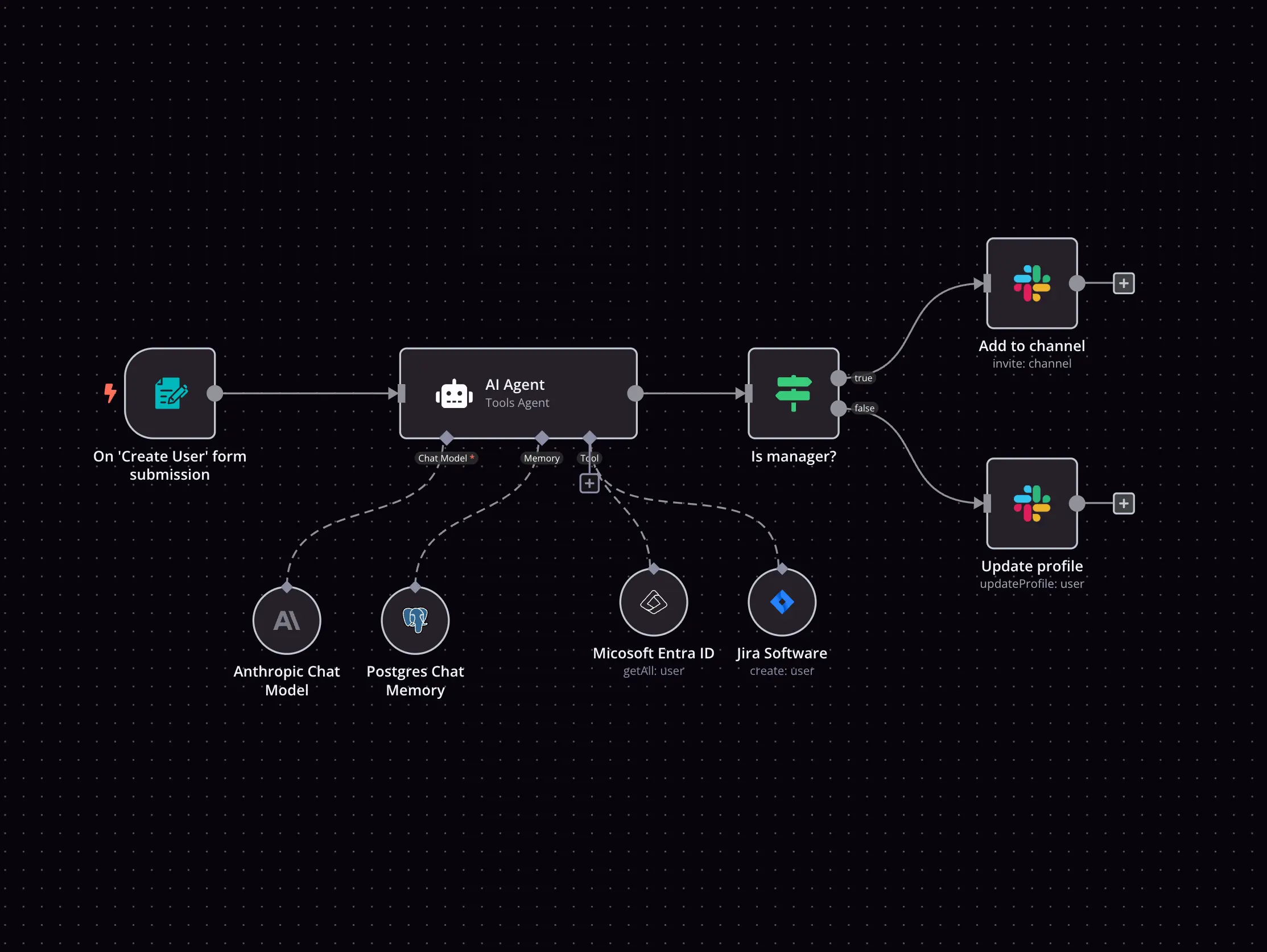Databricks and Todoist integration
Save yourself the work of writing custom integrations for Databricks and Todoist and use n8n instead. Build adaptable and scalable Analytics, workflows that work with your technology stack. All within a building experience you will love.

How to connect Databricks and Todoist
Create a new workflow and add the first step
In n8n, click the "Add workflow" button in the Workflows tab to create a new workflow. Add the starting point – a trigger on when your workflow should run: an app event, a schedule, a webhook call, another workflow, an AI chat, or a manual trigger. Sometimes, the HTTP Request node might already serve as your starting point.
Build your own Databricks and Todoist integration
Create custom Databricks and Todoist workflows by choosing triggers and actions. Nodes come with global operations and settings, as well as app-specific parameters that can be configured. You can also use the HTTP Request node to query data from any app or service with a REST API.
Supported API Endpoints for Databricks
List clusters
Retrieve a list of all the clusters in your Databricks workspace.
Create cluster
Creates a cluster with the specified Databricks Runtime version and cluster node type.
Delete cluster
Permanently deletes a cluster from your Databricks workspace.
Delete cluster
Permanently deletes the cluster with the specified cluster ID from the workspace.
Create cluster
Creates a new cluster in the Databricks workspace.
Create job
Creates a Databricks job that runs the specified notebook on the specified cluster.
Create directory
Creates an empty folder in a volume.
Upload file
Uploads a file to a volume.
List directory contents
Lists the contents of a volume.
Delete file
Deletes a file from a volume.
Delete directory
Deletes a folder from a volume.
List groups
Lists the display names for all of the available groups within the Databricks account.
To set up Databricks integration, add the HTTP Request node to your workflow canvas and authenticate it using a generic authentication method. The HTTP Request node makes custom API calls to Databricks to query the data you need using the API endpoint URLs you provide.
See the example hereThese API endpoints were generated using n8n
n8n AI workflow transforms web scraping into an intelligent, AI-powered knowledge extraction system that uses vector embeddings to semantically analyze, chunk, store, and retrieve the most relevant API documentation from web pages. Remember to check the Databricks official documentation to get a full list of all API endpoints and verify the scraped ones!
Todoist supported actions
Close
Close a task
Create
Create a new task
Delete
Delete a task
Get
Get a task
Get Many
Get many tasks
Move
Move a task
Quick Add
Quick add a task using natural language
Reopen
Reopen a task
Update
Update a task
Archive
Archive a project
Create
Create a new project
Delete
Delete a project
Get
Get a project
Get Collaborators
Get project collaborators
Get Many
Get many projects
Unarchive
Unarchive a project
Update
Update a project
Create
Create a new section
Delete
Delete a section
Get
Get a section
Get Many
Get many sections
Update
Update a section
Create
Create a new comment
Delete
Delete a comment
Get
Get a comment
Get Many
Get many comments
Update
Update a comment
Create
Create a new label
Delete
Delete a label
Get
Get a label
Get Many
Get many labels
Update
Update a label
Create
Create a new reminder
Delete
Delete a reminder
Get Many
Get many reminders
Update
Update a reminder
Databricks and Todoist integration details
FAQ
Can Databricks connect with Todoist?
Can I use Databricks’s API with n8n?
Can I use Todoist’s API with n8n?
Is n8n secure for integrating Databricks and Todoist?
How to get started with Databricks and Todoist integration in n8n.io?
Looking to integrate Databricks and Todoist in your company?
The world's most popular workflow automation platform for technical teams including
Why use n8n to integrate Databricks with Todoist
Build complex workflows, really fast


